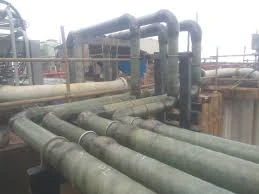
-
 Afrikaans
Afrikaans -
 Albanian
Albanian -
 Amharic
Amharic -
 Arabic
Arabic -
 Armenian
Armenian -
 Azerbaijani
Azerbaijani -
 Basque
Basque -
 Belarusian
Belarusian -
 Bengali
Bengali -
 Bosnian
Bosnian -
 Bulgarian
Bulgarian -
 Catalan
Catalan -
 Cebuano
Cebuano -
 China
China -
 China (Taiwan)
China (Taiwan) -
 Corsican
Corsican -
 Croatian
Croatian -
 Czech
Czech -
 Danish
Danish -
 Dutch
Dutch -
 English
English -
 Esperanto
Esperanto -
 Estonian
Estonian -
 Finnish
Finnish -
 French
French -
 Frisian
Frisian -
 Galician
Galician -
 Georgian
Georgian -
 German
German -
 Greek
Greek -
 Gujarati
Gujarati -
 Haitian Creole
Haitian Creole -
 hausa
hausa -
 hawaiian
hawaiian -
 Hebrew
Hebrew -
 Hindi
Hindi -
 Miao
Miao -
 Hungarian
Hungarian -
 Icelandic
Icelandic -
 igbo
igbo -
 Indonesian
Indonesian -
 irish
irish -
 Italian
Italian -
 Japanese
Japanese -
 Javanese
Javanese -
 Kannada
Kannada -
 kazakh
kazakh -
 Khmer
Khmer -
 Rwandese
Rwandese -
 Korean
Korean -
 Kurdish
Kurdish -
 Kyrgyz
Kyrgyz -
 Lao
Lao -
 Latin
Latin -
 Latvian
Latvian -
 Lithuanian
Lithuanian -
 Luxembourgish
Luxembourgish -
 Macedonian
Macedonian -
 Malgashi
Malgashi -
 Malay
Malay -
 Malayalam
Malayalam -
 Maltese
Maltese -
 Maori
Maori -
 Marathi
Marathi -
 Mongolian
Mongolian -
 Myanmar
Myanmar -
 Nepali
Nepali -
 Norwegian
Norwegian -
 Norwegian
Norwegian -
 Occitan
Occitan -
 Pashto
Pashto -
 Persian
Persian -
 Polish
Polish -
 Portuguese
Portuguese -
 Punjabi
Punjabi -
 Romanian
Romanian -
 Russian
Russian -
 Samoan
Samoan -
 Scottish Gaelic
Scottish Gaelic -
 Serbian
Serbian -
 Sesotho
Sesotho -
 Shona
Shona -
 Sindhi
Sindhi -
 Sinhala
Sinhala -
 Slovak
Slovak -
 Slovenian
Slovenian -
 Somali
Somali -
 Spanish
Spanish -
 Sundanese
Sundanese -
 Swahili
Swahili -
 Swedish
Swedish -
 Tagalog
Tagalog -
 Tajik
Tajik -
 Tamil
Tamil -
 Tatar
Tatar -
 Telugu
Telugu -
 Thai
Thai -
 Turkish
Turkish -
 Turkmen
Turkmen -
 Ukrainian
Ukrainian -
 Urdu
Urdu -
 Uighur
Uighur -
 Uzbek
Uzbek -
 Vietnamese
Vietnamese -
 Welsh
Welsh -
 Bantu
Bantu -
 Yiddish
Yiddish -
 Yoruba
Yoruba -
 Zulu
Zulu
frp transition
The Evolution of FRP Transition A Comprehensive Overview
Fiber Reinforced Polymer (FRP) materials have undergone significant transformations in recent years, reshaping various industries and offering innovative solutions to engineering challenges. The transition of FRP technology from its nascent stages to its current state reflects advancements in material science, manufacturing processes, and application methodologies. This article will explore the evolution, characteristics, and future prospects of FRP materials, emphasizing their importance across multiple sectors.
Understanding FRP Definition and Composition
FRP is a composite material made of a polymer matrix reinforced with fibers, typically glass, carbon, or aramid. The combination of these materials results in a lightweight yet durable substance with exceptional strength-to-weight ratios, chemical resistance, and durability. The fundamental composition of FRP allows it to outperform traditional materials like steel and concrete in various applications, particularly those requiring corrosion resistance and reduced weight.
The Transition Phase in FRP Development
Historically, the utilization of FRP materials began in the mid-20th century, primarily in aerospace and marine applications due to their excellent mechanical properties and low weight. Over the decades, the technology has evolved, leading to broader acceptance and application in construction, automotive, and even energy sectors. FRP transitioned from being a niche material used by specialists to a mainstream option for engineers and architects.
One significant catalyst for this transition has been the growing demand for sustainable materials. With increased awareness of environmental issues, industries have sought alternatives to traditional materials that contribute to ecological degradation. FRP materials, known for their longevity and resistance to environmental factors, align perfectly with this shift towards sustainability.
Current Applications and Benefits of FRP
Today, FRP is widely used in infrastructure projects such as bridges, buildings, and other civil engineering structures. The lighter weight of FRP leads to reduced transportation costs and simplified installation processes. For instance, in bridge construction, FRP components can be transported more easily and installed without heavy machinery, minimizing disruption to traffic and surrounding environments.
frp transition

Additionally, the corrosion resistance of FRP plays a crucial role in prolonging the lifespan of structures. Traditional materials often succumb to rust and degradation, requiring expensive maintenance and repairs. In contrast, FRP's resilience against harsh chemicals and weather conditions significantly lowers lifecycle costs.
In the automotive industry, the transition to FRP has also gained momentum. Manufacturers are increasingly adopting FRP components to manufacture lighter vehicles, improving fuel efficiency and reducing emissions. The transition from conventional materials to FRP signifies a major shift towards innovation and environmental responsibility in transportation.
Challenges and Future Directions
Despite its many advantages, the transition to FRP also faces challenges. The initial cost of FRP materials can be higher than traditional options, which may deter some engineers and project managers. Additionally, the industry must address issues related to recycling and end-of-life management of FRP products, as the long-term environmental impact of these materials remains a concern.
Research and development aimed at improving the cost-effectiveness and environmental sustainability of FRP are crucial for future growth. Innovations in manufacturing processes, such as 3D printing and automated fiber placement, have the potential to reduce production costs and expand the application of FRP across various sectors.
Moreover, enhancing the mechanical properties of FRP through hybrid composites and advanced fiber technologies can lead to new applications and improve existing ones. Collaborations between academia and industry can facilitate knowledge transfer and spur innovative solutions to further integrate FRP into mainstream practices.
Conclusion
The transition of Fiber Reinforced Polymer materials is a testament to the dynamic nature of technological advancement in materials science. As industries continue to prioritize sustainability, efficiency, and innovation, FRP stands at the forefront of this evolution. With ongoing research and the development of new applications, the future of FRP looks promising, heralding a new era of possibilities in construction, automotive, marine, and many other sectors. By embracing the transition to FRP, industries can pave the way for a more sustainable and advanced future.









